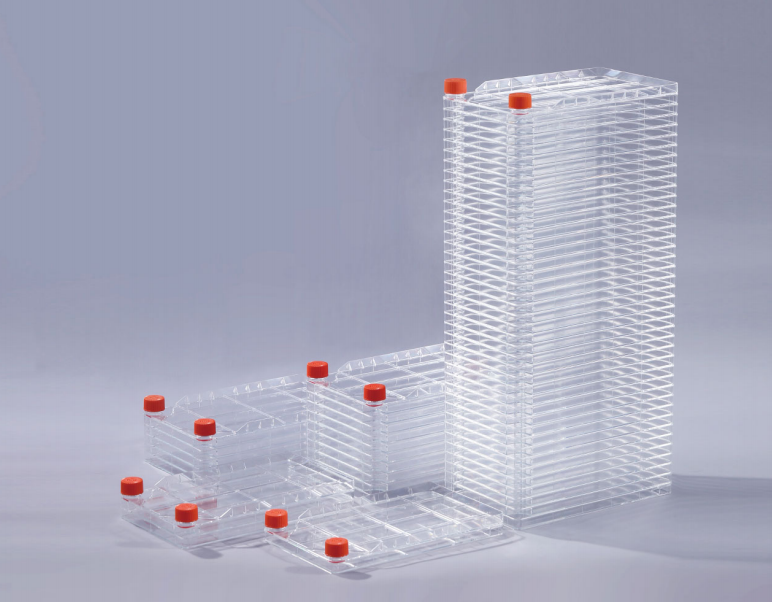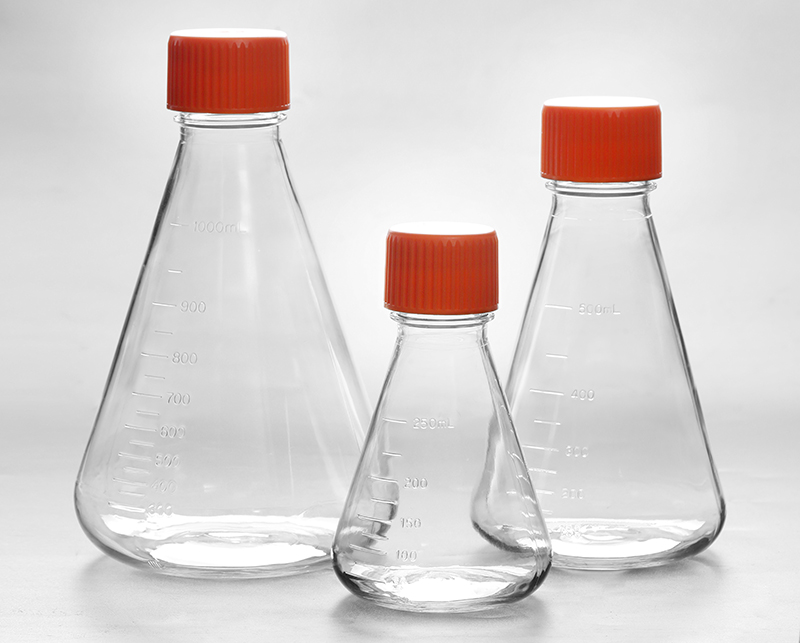Induction of Apoptosis in Human Pancreatic Cancer Stem Cells by the Endoplasmic Reticulum-Targeted Alkylphospholipid Analog Edelfosine and Potentiation by Autophagy Inhibition
内质网靶向烷基磷脂类似物艾德尔福辛诱导人胰腺癌干细胞凋亡和自噬抑制增强作用
Pancreatic cancer remains an incurable cancer with a gloomy prognosis and a median survival of months since the time of diagnosis. Disappointingly, no significant improvement in clinical outcomes has been achieved for the last fifty years. Cancer stem cells (CSCs) are suggested to be critical and responsible for tumor development, drug resistance and cancer relapse, therefore, an effective antitumor therapy against pancreatic cancer should deal with pancreatic CSCs. Here, we found that the alkylphospholipid analog edelfosine induces apoptosis in pancreatic CD44+CD24+EpCAM+ CSCs through its accumulation in the endoplasmic reticulum, leading to sustained endoplasmic reticulum stress and cell death. Edelfosine was effective against primary cultures from pancreatic cancer patients and their corresponding pancreatic CSCs. Autophagy inhibition potentiated the proapoptotic action of edelfosine in pancreatic CSCs. Thus, endoplasmic reticulum targeting and its combination with autophagy inhibitors could open a new framework in pancreatic cancer chemotherapy, directly involving pancreatic CSCs.
胰腺癌仍然是一种无法治愈的癌症,预后不佳,自诊断以来的中位生存期为数月。令人失望的是,在过去的五十年里,临床结果没有显着改善。癌症干细胞 (CSCs) 被认为是肿瘤发展、耐药性和癌症复发的关键和原因,因此,针对胰腺癌的有效抗肿瘤治疗应处理胰腺 CSCs。在这里,我们发现烷基磷脂类似物 edelfosine 在胰腺 CD44 + CD24 + EpCAM +中诱导细胞凋亡CSCs通过其在内质网中的积累,导致持续的内质网应激和细胞死亡。Edelfosine 对胰腺癌患者及其相应的胰腺 CSC 的原代培养物有效。自噬抑制增强了依地福辛在胰腺 CSC 中的促凋亡作用。因此,内质网靶向及其与自噬抑制剂的组合可以在胰腺癌化疗中开辟一个新的框架,直接涉及胰腺 CSC。

Pancreatic cancer is one of the most lethal malignancies with a poor and gloomy prognosis and the highest mortality-to-incidence ratio. Pancreatic cancer remains an incurable malignancy, and current therapies are ineffective. We isolated cancer stem cells (CSCs) from the human PANC-1 pancreatic cancer cell line as CD44+CD24+EpCAM+ cells. These CSCs form pancreatic cancer spheres or spheroids and develop tumors in SCID mice after subcutaneous injection of as few as 100 cells per mouse. Here, we found that the alkylphospholipid analog edelfosine inhibited CSC pancreatic cancer spheroid formation and induced cell death, as assessed by an increase in the percentage of cells in the sub-G0/G1 region by means of flow cytometry, indicative of DNA breakdown and apoptosis. This correlated with an increase in caspase-3 activity and PARP breakdown, as a major substrate of caspase-3, following PANC-1 CSC treatment with edelfosine. The antitumor ether lipid edelfosine colocalized with the endoplasmic reticulum in both PANC-1 cells as well as PANC-1 CSCs by using a fluorescent edelfosine analog, and induced an endoplasmic reticulum stress response in both PANC-1 cells and PANC-1 CSCs, with a potent CHOP/GADD153 upregulation. Edelfosine elicited a strong autophagy response in both PANC-1 cells and PANC-1 CSCs, and preincubation of CSCs with autophagy inhibitors, chloroquine or bafilomycin A1, enhanced edelfosine-induced apoptosis. Primary cultures from pancreatic cancer patients were sensitive to edelfosine, as well as their respective isolated CSCs. Nontumorigenic pancreatic human cell line HPNE and normal human fibroblasts were largely spared. These data suggest that pancreatic CSCs isolated from established cell lines and pancreatic cancer patients are sensitive to edelfosine through its accumulation in the endoplasmic reticulum and induction of endoplasmic reticulum stress.

胰腺癌是最致命的恶性肿瘤之一,预后差,病死率最高。胰腺癌仍然是一种无法治愈的恶性肿瘤,目前的治疗方法无效。我们从人 PANC-1 胰腺癌细胞系中分离出癌症干细胞 (CSC),即 CD44 + CD24 + EpCAM +细胞。这些 CSC 形成胰腺癌球体或球状体,并在每只小鼠皮下注射少至 100 个细胞后在 SCID 小鼠中形成肿瘤。在这里,我们发现烷基磷脂类似物 edelfosine 抑制 CSC 胰腺癌球体的形成并诱导细胞死亡,这是通过 sub-G 0 /G 1中细胞百分比的增加来评估的流式细胞仪检测区域,指示 DNA 分解和细胞凋亡。这与 caspase-3 活性和 PARP 分解的增加相关,作为 caspase-3 的主要底物,在用 edelfosine 处理 PANC-1 CSC 后。通过使用荧光edelfosine类似物,抗肿瘤醚脂质edelfosine与PANC-1细胞和PANC-1 CSCs中的内质网共定位,并在PANC-1细胞和PANC-1 CSCs中诱导内质网应激反应,有效的 CHOP/GADD153 上调。Edelfosine 在 PANC-1 细胞和 PANC-1 CSCs 中引起强烈的自噬反应,并且 CSCs 与自噬抑制剂、氯喹或巴弗洛霉素 A1 的预孵育增强了 edelfosine 诱导的细胞凋亡。胰腺癌患者的原代培养物对依地福辛敏感,以及它们各自孤立的 CSC。非致瘤性胰腺人细胞系 HPNE 和正常人成纤维细胞在很大程度上幸免于难。这些数据表明,从已建立的细胞系和胰腺癌患者中分离的胰腺 CSC 通过其在内质网中的积累和内质网应激的诱导而对依地福辛敏感。
The antitumor ether lipid edelfosine induces apoptosis in CD44+CD24+EpCAM+ pancreatic cancer stem cells (CSCs) and blocks the formation of pancreatic CSC spheroids, derived from the established human pancreatic cancer cell lines as well as from pancreatic cancer patient-derived primary cultures. Edelfosine accumulates in the endoplasmic reticulum (ER) of pancreatic CSCs, leading to persistent ER stress and eventually to cell death. Autophagy is triggered in CSCs as a protective signal to ER stress following edelfosine treatment, and thereby the combination of endoplasmic reticulum targeting with the action of autophagy inhibitors potentiates the proapoptotic activity of edelfosine against CSCs, and represents a promising approach to pancreatic cancer therapy. In addition, orally administered edelfosine lacks significant toxicity, and hence further studies are warranted to unveil its potential as a promising new approach in pancreatic cancer chemotherapy.

抗肿瘤醚脂质依地福辛诱导 CD44 + CD24 + EpCAM +细胞凋亡胰腺癌干细胞 (CSC) 并阻止胰腺 CSC 球状体的形成,这些球状体来源于已建立的人类胰腺癌细胞系以及胰腺癌患者来源的原代培养物。Edelfosine 在胰腺 CSC 的内质网 (ER) 中积累,导致持续的 ER 应激并最终导致细胞死亡。自噬在 CSCs 中被触发,作为 edelfosine 治疗后 ER 应激的保护信号,因此内质网靶向与自噬抑制剂作用的结合增强了 edelfosine 对 CSCs 的促凋亡活性,并代表了一种有前途的胰腺癌治疗方法。此外,口服依地福辛没有明显的毒性。
Keywords: pancreatic cancer stem cell,pancreatic cancer spheroid,endoplasmic reticulum, endoplasmic reticulum targeting,autophagy, pancreatic cancer, primary cultures from pancreatic cancer patients,alkylphospholipid analog,antitumor ether lipid,edelfosine,胰腺癌干细胞,胰腺癌球体,内质网; 内质网靶向,自噬,胰腺癌,胰腺癌患者的原代培养物,烷基磷脂类似物,抗肿瘤醚脂,依地福辛
来源:MDPI https://www.mdpi.com/2072-6694/13/23/6124/htm

上一篇: 细胞转瓶内的细胞生长缓慢是什么原因
下一篇: 测试细胞工厂细胞毒性常用的五种方法